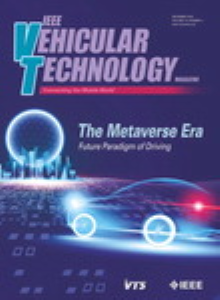State of Health Estimation and Remaining Useful Life Prediction of Electric Vehicles Based on Real-World Driving and Charging Data
IF 7.1
2区 计算机科学
Q1 ENGINEERING, ELECTRICAL & ELECTRONIC
引用次数: 3
Abstract
As the dominant choice for powering the Electric Vehicles (EVs), it is crucial to estimate its state of health (SOH) and predict its remaining useful life (RUL). This article proposes a novel machine learning-based prognostic method for lithium-ion batteries with real-world driving and charging data. A SOH evaluation system and a cluster interpolation correction method are applied to address the various data problems. Based on the capacity estimation method, select the voltage ranges through Dynamic Non-dominated Sorting Genetic Algorithm II (D-NSGA-II), which can dynamically capture the optimal ranges in different environments. A multi-dimensional input fusion model (GM-LSTM) is proposed to predict RUL, overcoming the problem of limited data. Additionally, several experiments based on EVs are implemented to verify the proposed method. The experimental results demonstrate the effectiveness of the proposed methodology, with the average relative error for SOH estimates and RUL forecasts are 1.53% and 1.34%.基于真实行驶与充电数据的电动汽车健康状态评估与剩余使用寿命预测
作为电动汽车(EV)的主要动力选择,评估其健康状态(SOH)和预测其剩余使用寿命(RUL)至关重要。本文提出了一种新的基于机器学习的锂离子电池预测方法,该方法具有真实世界的驾驶和充电数据。应用SOH评价系统和聚类插值校正方法来解决各种数据问题。基于容量估计方法,通过动态非支配排序遗传算法II(D-NSGA-II)选择电压范围,可以动态捕捉不同环境下的最佳范围。针对数据有限的问题,提出了一种多维输入融合模型(GM-LSTM)来预测RUL。此外,还进行了几个基于电动汽车的实验来验证所提出的方法。实验结果证明了所提出方法的有效性,SOH估计和RUL预测的平均相对误差分别为1.53%和1.34%。
本文章由计算机程序翻译,如有差异,请以英文原文为准。
求助全文
约1分钟内获得全文
求助全文
来源期刊
CiteScore
6.00
自引率
8.80%
发文量
1245
审稿时长
6.3 months
期刊介绍:
The scope of the Transactions is threefold (which was approved by the IEEE Periodicals Committee in 1967) and is published on the journal website as follows: Communications: The use of mobile radio on land, sea, and air, including cellular radio, two-way radio, and one-way radio, with applications to dispatch and control vehicles, mobile radiotelephone, radio paging, and status monitoring and reporting. Related areas include spectrum usage, component radio equipment such as cavities and antennas, compute control for radio systems, digital modulation and transmission techniques, mobile radio circuit design, radio propagation for vehicular communications, effects of ignition noise and radio frequency interference, and consideration of the vehicle as part of the radio operating environment. Transportation Systems: The use of electronic technology for the control of ground transportation systems including, but not limited to, traffic aid systems; traffic control systems; automatic vehicle identification, location, and monitoring systems; automated transport systems, with single and multiple vehicle control; and moving walkways or people-movers. Vehicular Electronics: The use of electronic or electrical components and systems for control, propulsion, or auxiliary functions, including but not limited to, electronic controls for engineer, drive train, convenience, safety, and other vehicle systems; sensors, actuators, and microprocessors for onboard use; electronic fuel control systems; vehicle electrical components and systems collision avoidance systems; electromagnetic compatibility in the vehicle environment; and electric vehicles and controls.

 求助内容:
求助内容: 应助结果提醒方式:
应助结果提醒方式:


